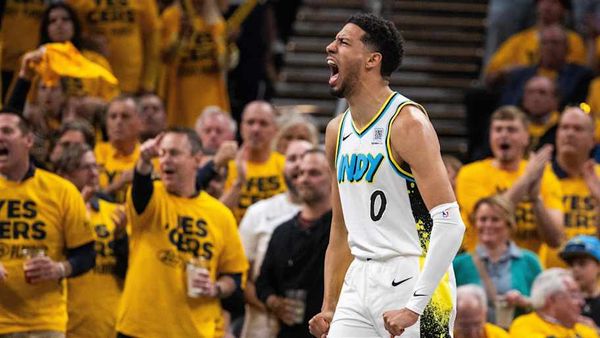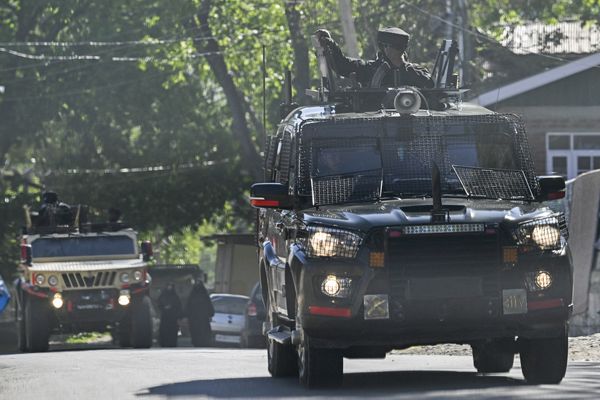
Louis Scarcella was your classic 70s New York City detective, a hard-charging renegade who lived for locking up bad guys. In 26 years on the beat, most of that time overlapping with New York’s crack era, he was famous for his ability to close cases and seal murder convictions. There was just one problem with his carefully crafted reputation: he was crooked.
It took a group of wrongfully convicted people who were imprisoned based on Scarcella’s overzealous policing to reveal the lie. “We pledged that whoever got out of prison first would spread the word that there were many men in jail for crimes they didn’t commit,” says the 58-year-old Derrick Hamilton, now a paralegal teaching at Yeshiva University’s Cardozo School of Law.
Hamilton was part of that crack team of jailhouse lawyers – the term for the self-taught incarcerated people who take up the slack when public defenders fall short or can’t take clients who have already lost the first appeal. What they lack in academic credentials (most have little more than a high school degree), they make up for in time and determination. Also: they work a whole lot cheaper. “Basically, the system says, ‘We don’t care about your innocence,’” says Shabaka Shakur, a paralegal consultant for New York City’s department of education. “We’re just here to make sure you have a ‘fair trial’. You had a lawyer. You met the minimum standard of what you were supposed to get in court. Whether you’re innocent or not is not our issue.”
Former residents of a correctional facility in Auburn, New York, Hamilton and Shakur were partners at a jailhouse firm called the Actual Innocence (AI) – a term used in post-conviction claims. Shakur was sentenced to 20 years to life in 1989 for the murder of two drug dealers. Hamilton was sentenced to 25 years to life in 1993 for a murder outside a housing project. Like Hogan’s Heroes tunneling under the jailhouse, the AI team was a way to remain engaged with the outside world and keep their cases churning in the system. And it attracted its share of legal pedants. “They used to put me in the box regularly,” says Shakur, recalling his stints in solitary confinement, “but I would always file these hearing motions, and the judge would let me out. Guys would be like, ‘Yo, you’re really good at the law.’ And I’d say, ‘No, these guys never follow the rules!’”
The more the AI team advocated for themselves and their clients, the closer they got to dismantling the legacy of one of the most fabled figures in New York law enforcement. In 2013, a New York Times examination found that the guilty verdicts in many of Scarcella’s murder cases had been derived through forced or false confessions and the testimony of the same eyewitnesses. The Brooklyn district attorney’s office ordered a review of 50 of the 70 murder cases Scarcella worked. As of this April, around 13of those cases have seen their original trial convictions reversed.
Hamilton and Shakur are among the AI team members who share their experience in the podcast The Burden. The limited series, which unfolds over nine half hour-long episodes, also features extensive interviews with Scarcella – who, of course, doesn’t apologize for his methods or the system that made him a hero.
Scarcella hasn’t been charged with any crimes, despite official citations for bad practice, and he insists he did nothing wrong. The resulting claims and settlements from those wrongfully convicted have cost New York taxpayers more than $100m. The sum barely accounts for the psychic toll on Shakur. His charges were dismissed in 2015 by Justice Demond Green and the late Brooklyn district attorney Kenneth Thompson decided not to retry after Green concluded that Scarcella had falsified a confession from Shakur. By then, Shakur had served 27 years in prison.
That same year, Thompson’s office concluded that Hamilton was also innocent, and he was freed after 23 years in prison. “I was surprised to learn how easy it was for somebody to manipulate the criminal justice system,” Hamilton says.
A Brooklyn native, Hamilton characterizes himself as a fundamentally good kid (his habit of showing up to school in the same blazer and slacks earned him the family nickname Suity) who fell in with the tough crowds that terrorized his community. At age 15, he received his first jail sentence for robbery, 60 days.
In 1983, not long after turning 18, Hamilton was convicted twice for the murder of a bread delivery man in his Brooklyn neighborhood and given a 32-years-to-life sentence – but won his release on appeal six years later via an Alford plea, which allows a defendant to accept a plea bargain while maintaining their innocence.
Raring to start over with his wife and three children, Hamilton made a plan with his brother to open a hair salon in New Haven, Connecticut. Two weeks after its grand opening in March 1991, Scarcella barged in and collared Hamilton for another Brooklyn murder, involving a person Hamilton knew. With help from eyewitnesses later found to have testified under pressure from Scarcella, Hamilton received a 25-years-to-life sentence. “Pictures, hotel receipts – we had the evidence,” Hamilton says of his alibi. “But Scarcella’s very conniving, very convincing. He had a charisma that people tended to believe.”
Hamilton began serving that time at the maximum security facility in Attica, New York, infamous for its 1971 riot and for being one of the toughest prisons in the country. Placed in solitary confinement for nearly a decade, he took on work as a jailhouse lawyer as a mental escape from his tortured surrounds. (This was after apprenticing under other jailhouse lawyers during a previous prison stint.) In a breakthrough case, he won the release of the Bronx man convicted for the murder of 50 Cent – the notorious criminal from whom Curtis Jackson, the multi-platinum rap star, took his stage name. After a 2009 transfer to Auburn, New York, a hard-won reprieve from solitary confinement, Hamilton finally had access to the prison’s law library – a mandatory provision in all New York state correctional facilities.
It was there that another inmate, Nelson Cruz, formally introduced Hamilton to two more men Hamilton knew were fighting to overturn their murder convictions –Shakur and Danny Rincon. They decided to join forces and launch Actual Innocence. Each man played a specific role: Hamilton was the law professor, Shakur was the documents expert and Rincon handled media outreach. That left Cruz to play clerk and provide the coffee (brewed from the water in his cell toilet and a sock filter), which he delivered to Hamilton’s cell via a sheet-made line to keep him typing up motions deep into the night.
“We worked every single day,” Hamilton recalls. “We bugged lawyers, judges, prosecutors – everybody would hear from us. We had to organize ourselves as one unit because individually we weren’t being heard.” Only a company masthead would have made their legal team more official. “It’s funny you should say that,” Hamilton says. “We couldn’t get that far because there are rules and regulations as far as owning businesses and branding and things of that nature.”
Eventually, their team of four grew to 12 people, which presented some daunting math for the firm. Jailhouse lawyers have a reputation for getting everyone out of prison but themselves. But that prospect became less fraught for the AI team once they discovered the common link between all their cases was Scarcella. “We definitely believed that you left no man behind,” Hamilton says.
Amazingly, this motley crew was able to get three of its principals out. (Rincon is still arguing for his release. “He’s got a really complicated case,” Shakur says.) But Hamilton, who won $7m in settlements from the cities of New York and New Haven for his wrongful conviction, is still bitter. He still has PTSD from his two decades in prison while advocating for criminal justice reforms. In our conversation, he made a point of paying tribute to Thompson, the late Brooklyn DA, a notable ally who pushed to reopen Scarcella’s cases even as he received flak from Black constituents for his lenient sentencing recommendation following the 2014 police killing of Akai Gurley. “Ken was a man who believed in changing the system,” Hamilton says. “I understand how the Black community feels. But I also understand Ken’s objective stance and understanding of police culture. That’s what it boiled down to.”
Remarkably, Hamilton is just as philosophical about the detective who robbed him of so many years.
“Scarcella was a product of the time,” he says. “When he called you a murder or a killer, people really believed him. That’s my biggest thing with him: he was given the ability to close cases, and it didn’t matter whether he did it within the framework of the constitution or whether or not people actually got justice.”
The Burden podcast is available on Apple, Spotify and other platforms







